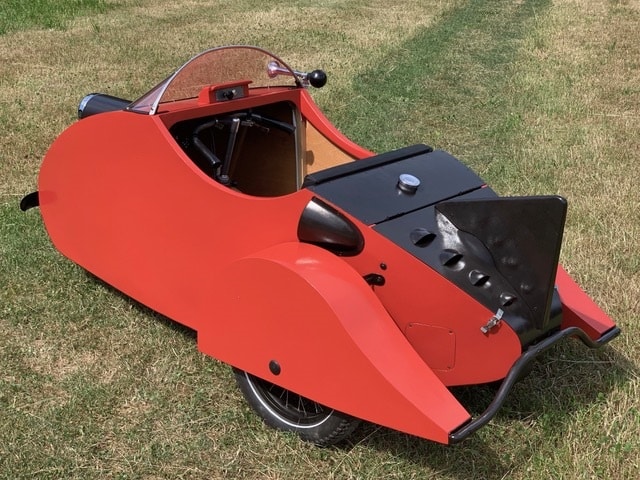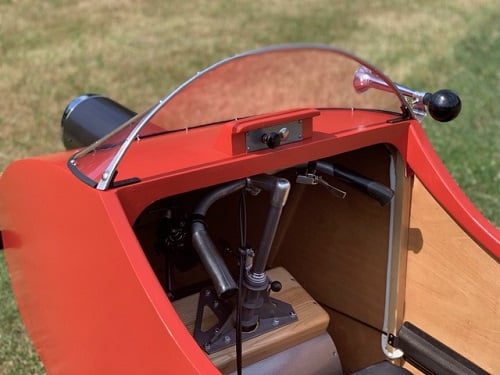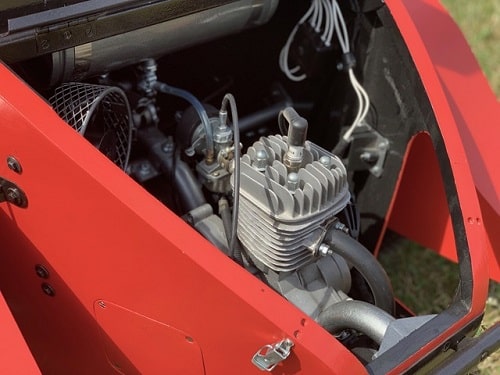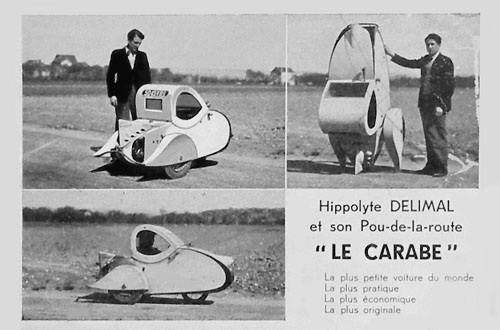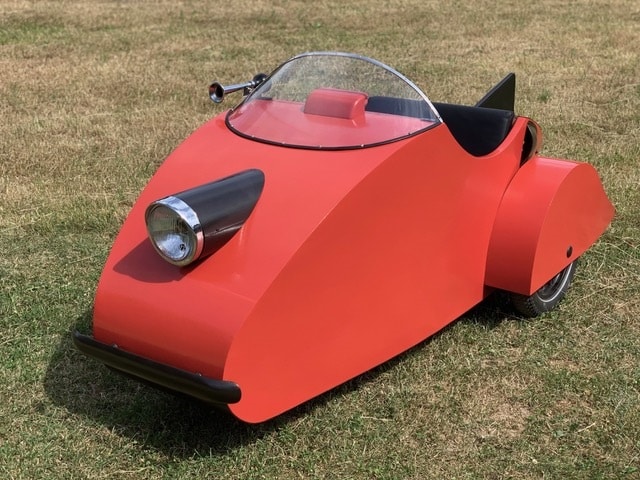
Le Carabe (replica)- 1936
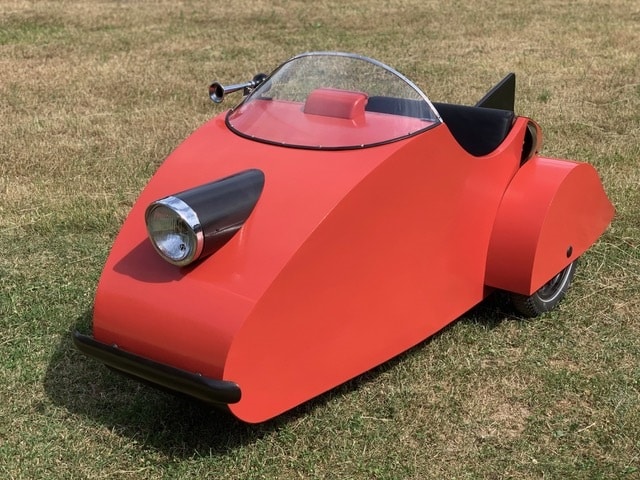
Little is known about French inventor Hippolyte Delimal. But in 1936 he attempted to create the world’s smallest car, which reached a speed of 24 mph and touted fuel economy of 118 mpg. He affectionately named it Le Carabe, or the “Ground Beetle”.
His vision and enthusiasm could be seen in a completely intact, hand-written, hand-drawn, 63 page manuscript he left behind. The found booklet details his trials and tribulations of building the car. Most remarkably, it contains detailed instructions, complete with dimensional schematics that rival anything out of Popular Mechanics from years past. This is fitting because, according to this arduous account, Delimal stated what he wanted most was for the everyday person to build and drive his Le Carabe. In neat penmanship, he wrote the vehicle was, “…designed specifically for amateur construction. No special tools or machines.”
In materials alone, Le Crarabe could be built for around 450 Francs (about 4% the cost of a new car at the time). He repurposed a Motobécane 50cc single cylinder two-stroke engine of the time and coupled it with a light wooden body. “Plywood is the sheetmetal of the carpenter. The body should be light and very strong.” For steering, he fitted old bicycle handlebars and a telescopic fork. He also reused bicycle sprockets and rear hubs, motorcycle drum brakes, and he even suggests filling the empty space of the body sides with cotton to keep the feet warm during the cold winter.
On July 13th, 1936, Delimal began construction. By the very next day, the body was complete. In just 8 days the entire prototype was finished. In August of 1936, he presented his small, wooden, single-cab, three-wheeled vehicle at the Concours Lépine in Paris, the International Exhibition of Inventions. Launched in 1901 by the city’s police chief, Louis Lépine, this concours was a special contest for small artisan inventors, and offered the potential of patenting for exhibitors. Over the years, the Concours Lépine has grown into an annual event that remains a catalyst for innovation to this day. Delimal had high hopes of solving the parking problems in busy Paris and this was the perfect platform. Although Delimal did not win any prizes, he listened to the reactions of the crowd. After the exhibition he conducted more tests, and made better adjustments, but the diminutive car never went into production.
What a piece of history! It is a thrill to read through Delimal’s booklet and be invited into the mind of an artist in the throes of invention. His account offers first-hand excitement of building a machine that could take us places and become part of us and our culture. That enthusiasm is infectious. At Lane Motor Museum, Le Carabe has been thoughtfully brought back into existence through the work of Janda Garage of the Czech Republic. With Delimal’s 1937 handwritten booklet in hand, we were able to reproduce the “Roadster” model with recommended windshield and fetching red finish. Who knew that such a small car could bring so much joy? By making one from these original plans we are keeping the spirit of Delimal alive.
Specifications:
Manufacturer: Hippolyte Delimal and recreated by Janda Garage
Country of Origin: France (Hippolyte Delimal) Czech Republic (Janda Garage)
Drivetrain Configuration: Chain-driven, rear engine, rear-wheel drive
Engine: Air-cooled, 50cc, Motobécane, two-stroke
Transmission: 2 speed
Top Speed: 40 km/hr (24 mph)
Years of Production: 1936
Number Produced: 1
Original Cost: 450 Francs (about $28)
Curb Weight: 200 lbs

